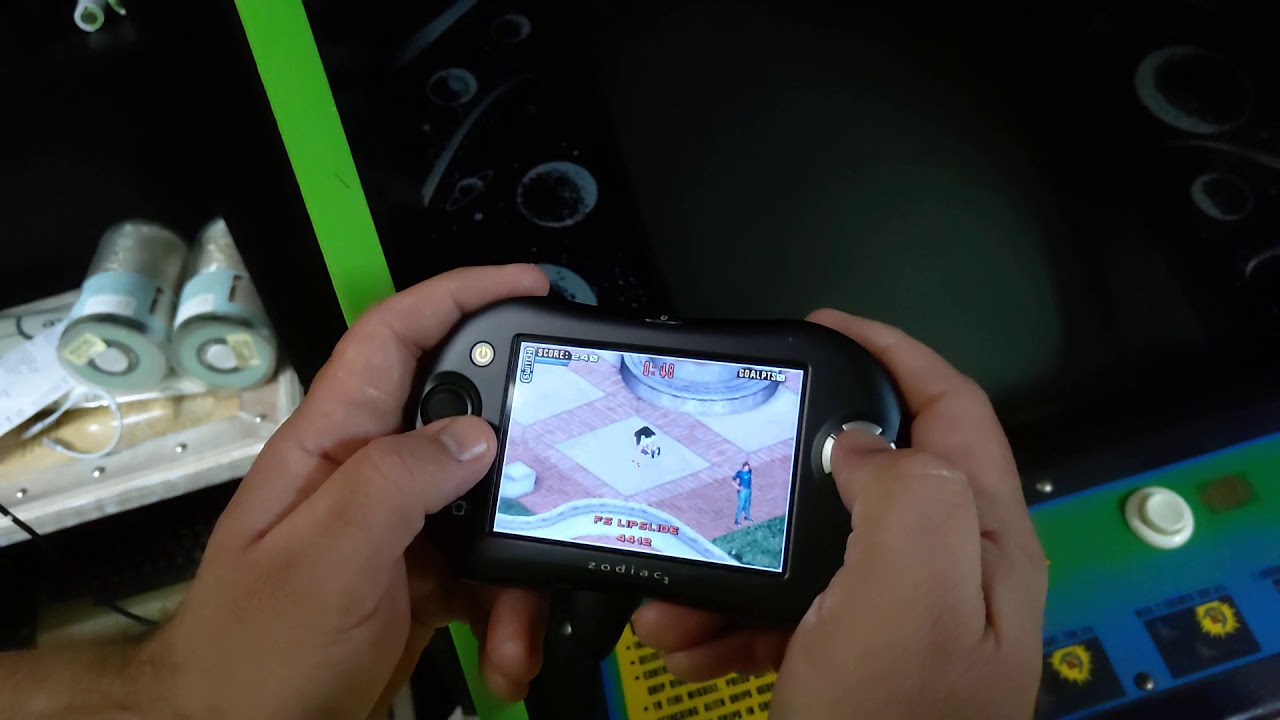The Tapwave Zodiac is considered one of the most unique handheld gaming consoles in history. It was released in 2003 by Tapwave, a company that focused on developing software and hardware for mobile entertainment solutions. The Tapwave Zodiac was not just a console but also a PDA (personal digital assistant), making it a multi-functional device. The device’s release came after the increasing popularity of handheld gaming consoles like Nintendo’s Game Boy Advance and Sony’s PlayStation Portable. The Tapwave Zodiac quickly gained attention due to its distinct features and the ability to run both gaming and PDA-based applications. In this article, we will delve into the brief history of Tapwave, introduce the Tapwave Zodiac and explore its significance in video game console history.
Overview of the Tapwave Zodiac
The Tapwave Zodiac was a video game console created in 2003 by Tapwave, a technology company based in California. The device was a combination of a Personal Digital Assistant (PDA) and a gaming console, which distinguished it from other consoles in the market at that time.
The console was equipped with impressive technical specifications that made it a popular choice among gamers. Running on a 200MHz ARM processor with 32MB of RAM, the Zodiac boasted a 320×480 touchscreen display, which was used for both gaming and PDA functionality. Additionally, it supported a wide range of multimedia capabilities, including music, photos, and videos.
The Zodiac’s design was sleek and stylish with a clamshell form factor. It was compact and easy to carry around, with dimensions of 6.8 x 3.0 x 0.6 inches. The console had a variety of features that made it stand out from its competitors, including a Lithium-Ion battery, which provided hours of uninterrupted play time.
The Zodiac was launched during the height of the console wars between Microsoft Xbox, Nintendo GameCube, and Sony PlayStation 2. Although it was not as popular as these consoles, it carved out a niche for itself with its unique combination of PDA and gaming functionalities. The Zodiac’s major advantage was its portability, making it the go-to choice for gamers always on the move.
Reception of the Tapwave Zodiac
The Tapwave Zodiac console was met with mixed reviews from both critics and fans alike. Some praised the console for its innovative approach, while others criticized it for its lack of marketing and shortage of first-party games.
Critic reviews of the console varied, with some outlets praising its unique design and functionality, while others cited issues with the screen and price point. Fan reviews were similarly divided, with some praising the console’s exclusive games and multimedia features, while others complained about its limited library and lack of support from third-party developers.
When compared to other consoles of the era, the Tapwave Zodiac fell short in terms of sales and market share. The console was released during a time when the handheld gaming market was dominated by the Nintendo Gameboy Advance, and it struggled to compete against its established and better-marketed contemporaries. Despite its unique features, the Tapwave Zodiac failed to capture a significant market share and was ultimately discontinued.
Sales and Market Impact
The Tapwave Zodiac was designed for gaming and PDA functions, which was the first-ever combination of this kind of hardware. The device was introduced as a challenger to the established gaming consoles, which consisted largely of brighter and more recognizable brands such as Sony and Nintendo.
The Tapwave Zodiac itself was a unique device that was only available through select retailers. It was marketed towards gamers. The company aimed to tap into the console market by offering something that others did not, a combination PDA device with gaming capability.
Despite the ultra-competitive gaming console market, Tapwave Zodiac had a unique market, and curious gamers were quickly drawn to the new toy. Even though Tapwave was not as well-known as Nintendo or Sony, the company was not shy about competing with them. With exclusive insurance plans and other exclusive offers, Tapwave games were hard to get, which proved the system’s craze.
While the Tapwave Zodiac didn’t dominate sales, it did create a lot of buzz in the media, with publications remarking on the novel concept of a gaming PDA. Sales figures were initially impressive, and according to reports, Tapwave sold over 500,000 units before running into financial difficulties.
Games Available on the Tapwave Zodiac
The Tapwave Zodiac had a small but dedicated following of gamers who enjoyed playing games on the console. Despite its limited library of games, the Tapwave Zodiac had some notable titles that were exclusive to the platform. Here are some of the best-selling titles that were available on the Tapwave Zodiac:
Best-Selling Titles:
- DOOM II RPG: A unique twist on the classic first-person shooter game that incorporates role-playing elements
- Bejeweled 2: A puzzle game that challenges players to match gems of the same color
- RealArcade: A collection of classic arcade games like Pac-Man and Tetris
Besides popular titles, the Tapwave Zodiac also had unique gameplay features that were distinctive to the platform. Its accessory kit, which included an SD card slot, allowed players to download and save games directly onto the console. Additionally, the Tapwave Zodiac was one of the first consoles to incorporate Bluetooth technology, enabling players to connect wirelessly with other players and play multiplayer games that weren’t possible on other devices at the time.
The Tapwave Zodiac’s game library may have been small, but it offered unique titles and features that made it a worthwhile device for gamers on the go.
Review of the Tapwave Zodiac
The Tapwave Zodiac was a bold and ambitious release, but like any other console, it was not without its strengths and weaknesses. Let’s take a closer look at what the Zodiac brought to the table and how it held up overall.
Pros of the Zodiac
- The Zodiac offered a unique and impressive hardware design that was unrivaled in the market.
- The compatibility of Palm OS apps and a superb multimedia suite made it a convenient gadget for gamers and non-gamers alike.
- The Zodiac had its share of exclusive games that truly shone on the console, making it a must-have item for anyone looking for something truly fantastic.
Cons of the Zodiac
- The battery life was not significant, which made it challenging to play a game for a long time.
- The non-standard screen resolution of the Tapwave Zodiac made porting other games a challenge.
- The Zodiac suffered due to the lack of third-party support, making it difficult to sustain the console’s future and develop an ecosystem around it.
Overall evaluation
The Tapwave Zodiac had all the makings of an excellent gaming-console, but fell short of its potential due to a few notable flaws. In terms of hardware, it had some impressive features that set it apart from its competitors. However, the battery life and unique screen resolution presented some significant drawbacks that ultimately hampered the experience.
Despite these flaws, the Tapwave Zodiac remains a cult favorite among retro gaming enthusiasts, and it had the potential to excel if given the chance.
Conclusion
The Tapwave Zodiac may not have enjoyed the success of some of its competitors, but it left behind an impressive and important legacy in video game console history. The console was a unique blend of handheld console and PDA, making it an innovative and forward-thinking device that was ahead of its time.
Despite its lackluster sales figures, the Tapwave Zodiac was praised for its technical specifications, design, and games, with some critics and fans placing it on par with the Game Boy Advance and PlayStation Portable.
Looking to the future, Tapwave may have missed its chance to make an impact in the console market, but it’s not too late for the company to make a comeback with its innovative ideas. By targeting unique selling points and by tapping into the current gaming market, Tapwave could make a lasting impact on the gaming industry.
Overall, the Tapwave Zodiac was an impressive and forgotten console that deserves a place in video game history. It’s up to the gaming community, and the company itself, to recognize its legacy and to build on its potential for the future.













